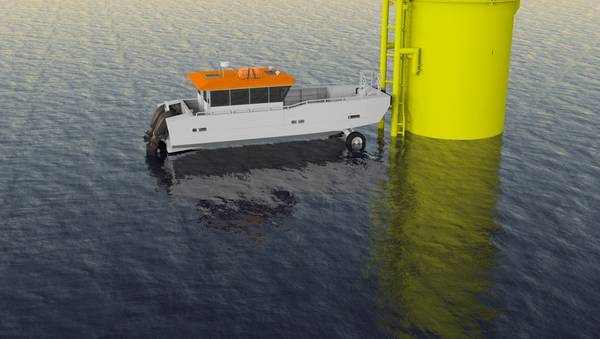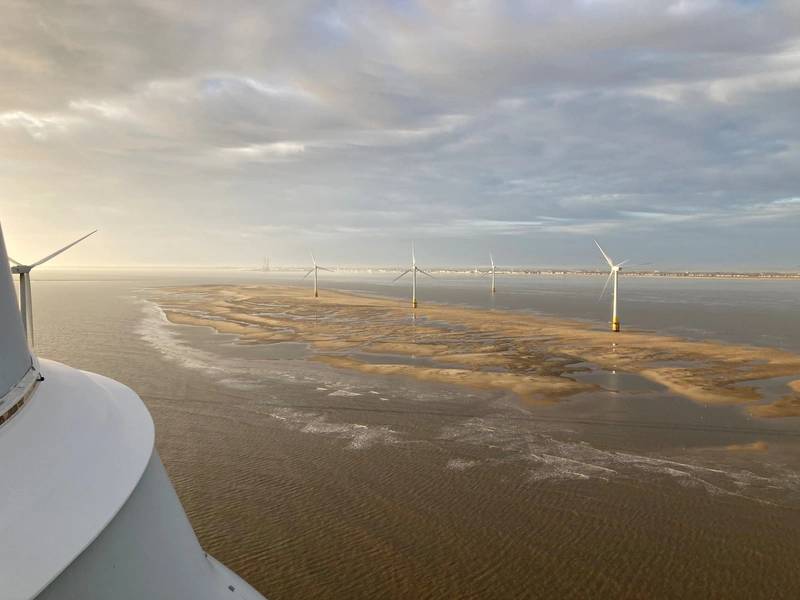
German renewable energy industry giant RWE, in partnership with Commercial Rib Charters (CRC), is building "a world-first" amphibious vessel for reaching offshore wind farms in shallow waters.
"The unique crew transfer vessel has initially been designed to reach turbines at Scroby Sands [wind farm in the UK ], which have become stranded by the natural rising tide of the sandbank on which it is built. The fully seaworthy vessel, which can also drive on land, provides a unique access solution for some of the industry’s first-generation assets affected by very dynamic seabed conditions," RWE said.
RWE’s 60 megawatts (MW) Scroby Sands Offshore Wind Farm was one of the first of a group of projects to be built in the UK, and all in coastal locations with relatively shallow waters close to shore. Scroby Sands was built on a prehistoric sandbank and, because of natural changes in the marine environment and coastal erosion, this has risen over time effectively isolating four turbines from being accessed by service vessels, RWE said. Scroby Sands - Credit: RWE
Scroby Sands - Credit: RWE
"The bespoke solution was jointly developed in record time between RWE’s Operations team, its Technology & Innovation team and its vessel provider Commercial Rib Charter (CRC), which contracted naval architects Chartwell Marine to carry out the design to the specifications requested. The vessel is now in construction and is being built by Isle of Wight-based boat builders Diverse Marine; it will be operated for RWE by CRC, via a six-year contract," RWE said.
Stuart Hedges of Commercial Rib Charter says ‘’The collaborative approach we have taken has helped mitigate the risk on such a technically innovative project. Working with highly competent marine architects and a boat builder steeped in experience has not only produced an excellent design but has done so to both budget and timetable. We signed the build contract with Diverse Marine in December, and we plan to be operational at Scroby in September this year.’’
The amphibious vessel is to be named ‘CRC Walrus’ in honor of R.J. Mitchells’ classic 1930’s Supermarine amphibious biplane. It has two wheels at the front and one at the back, and is capable of transferring 10 technicians and two crew to any of the turbines within the array, including on the raised sandbank. CRC Walrus is a 12-meter type-approved crew transfer vessel, with a 1000kg deck cargo capacity.